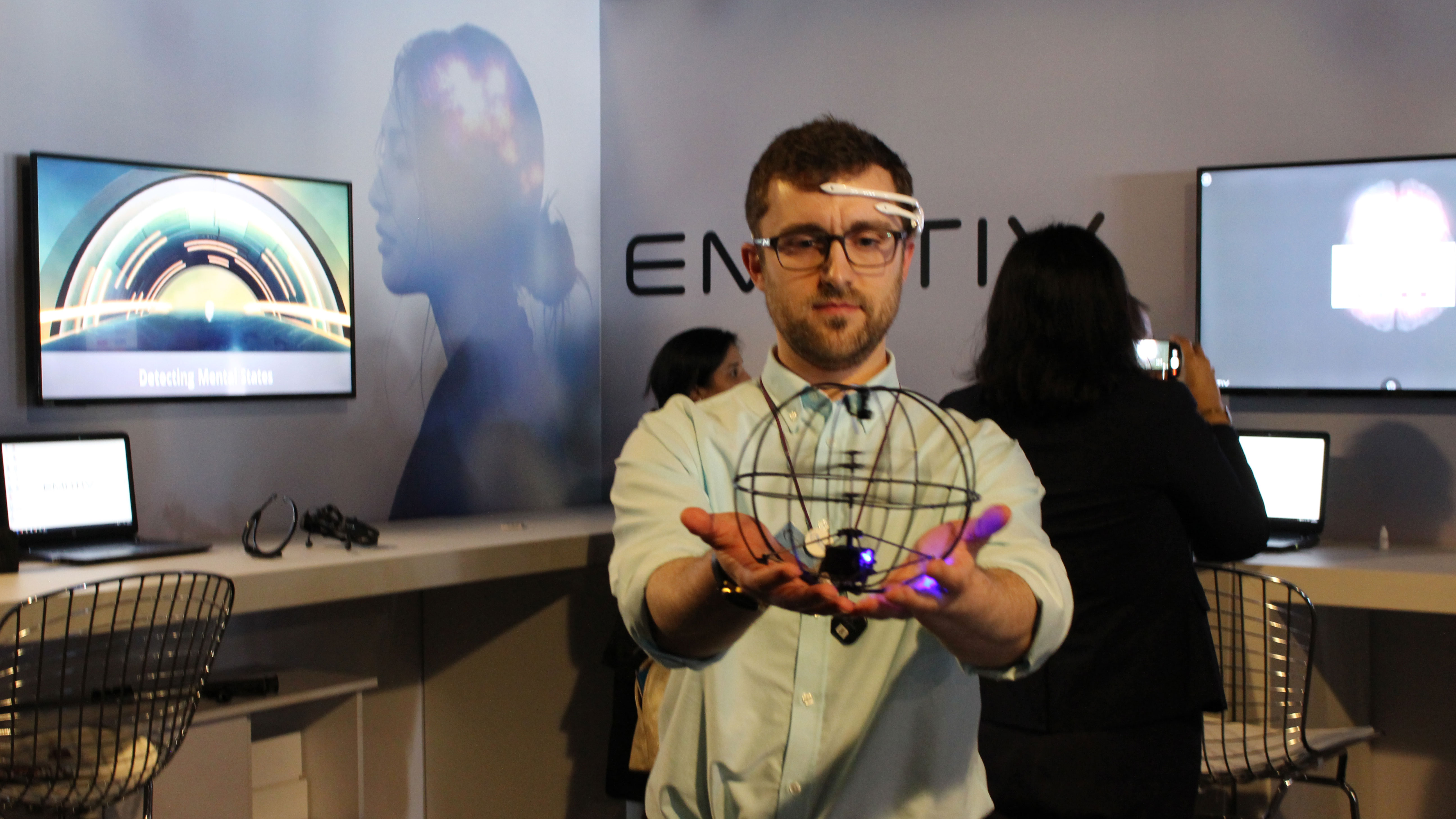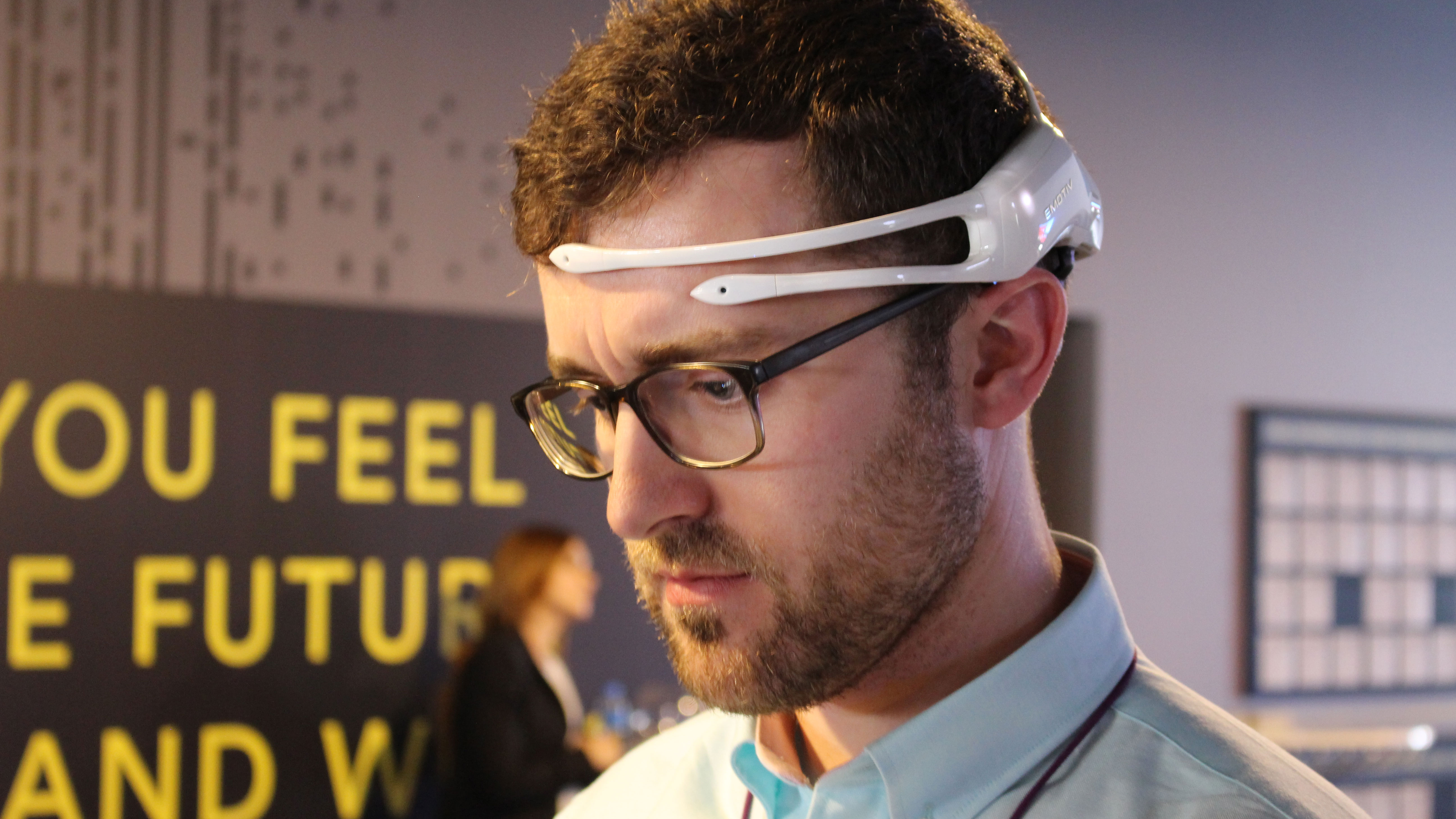I flew a drone with my brain – but that’s only the beginning
Mind control could be the next digital interface

You’ve tried moving things with your mind. I know you have. Everyone has. Maybe you just watched Star Wars, or Matilda, or X-Men, and thought ‘What if I’m the one? What if I’ve got the gift?’
Well, I can proudly say that I have moved something using my mind. Unfortunately I haven’t developed true telekenetic powers; rather I used an EEG headset that measured my brain waves to activate a drone.
I achieved this feat at the Global Education and Skills Forum (GESF) in Dubai, with the help of consumer neuroscience company Emotiv.
Brain training
The system works by training the headset to pick up on a sustained thought pattern, then associating those brainwaves with the drone taking off. Interestingly, it’s not a case of thinking ‘up’ or ‘fly’, but whatever thought you want, so you could think of a color and it would learn that pattern.
I started by doing a ‘base level’ test during which I was supposed to think of nothing (which I struggle with), and then the person guiding me through the experience moved on to the ‘active’ section.
All I could think of was the bit in The Dark Knight Rises where all the prisoners in Bane’s hole are chanting for Batman to rise. Rise. Rise!

Then the training was over and I was ready to use my new techno-powers... and nothing happened. ‘Rise’ I thought. ‘Rise!’
Get daily insight, inspiration and deals in your inbox
Sign up for breaking news, reviews, opinion, top tech deals, and more.
The person helping me chipped in: “Relax and take a breath.” I hadn’t even realized how tense I was. I took a deep breath, let go of some body tension, and the drone took off!
The controls were pretty binary, with ‘on/off/land’ being the only options, and I didn’t get to the stage of doing a soft landing. I could only make the drone fly dramatically up into the air, then stop and plummet back to the ground.
Becoming a digital jedi
The experience didn’t allow for any nuance of directional control, but it was the simplest demo version of the technology, and the headset is already capable of a lot more.
We took a couple of minutes to sit down with Olivier Oullier, a professor of behaviour and brain sciences, and the president of Emotiv, to talk about what the headset is capable of, and the future of EEG technology:
“This is a simplified experience because people need to be able to control the object with their mind in a few seconds,” Ouillier told us. “For centuries people have been using their hands, their body, and now sound to control computers. What we’re doing is democratizing access to brain health and brain-computer interfaces.
“Basically we’re transforming anyone into a Jedi. Any connected object, we can talk to, with the brain, using our interface.”

And that last point is pretty significant when thinking about the rise of connected devices. More and more of us are filling our homes with smart light bulbs, smart thermostats, smart televisions and other gadgets.
And people are already using the Emotiv headset to control these devices. There are YouTube videos of people using the headset to control their TV. Oullier told us about someone who controls their Philips Hue lights with it. And there’s one user who’s totally paralzsed who is using the device to write emails.
Added to how utterly brilliant that is for the disabled community, it raises an interesting point about a potential future application: AR glasses. Currently, with devices like Hololens, you have to do some (fairly odd-looking) gestural commands.
Imagine if you could just think your notifications away as they pop up in your field of vision. Or reply to a text message without having to use your hands or your voice. The reality is that it’s possible. And not that far away.
“Part of what we’re doing with the drone here is to show how casual brain-computer interface is,” Ouillier adds. “The technology is here. It’s not science fiction, it’s science in action.”
So how far away are we from a set of glasses that give you telekinetic powers? “A problem at the moment is form factor,” Ouillier says. “The research headset, it’s not the most convenient thing to put on your head. But there are a couple of things that people don’t mind putting on their head. And it’s going to come out soon.”
- Want more mind-controlled tech? Check out: F1 ace Lewis Hamilton agrees to race quadriplegic in brainwave-controlled cars
Andrew London is a writer at Velocity Partners. Prior to Velocity Partners, he was a staff writer at Future plc.
